Managing insulin resistance can be challenging, especially when it comes to meal planning. Fortunately, there are plenty of delicious dinner ideas that can help maintain balanced blood sugar levels while still being enjoyable to eat. These meals often focus on whole, nutritious ingredients that support overall health.

Introducing Sugar Defender, an advanced blend of 24 proven ingredients supporting healthy glucose levels and natural weight loss.
Choosing the right foods is essential for anyone looking to improve their insulin sensitivity. This article presents 15 dinner ideas that are not only satisfying but also align well with dietary needs for those affected by insulin resistance.
Grilled Salmon with Asparagus
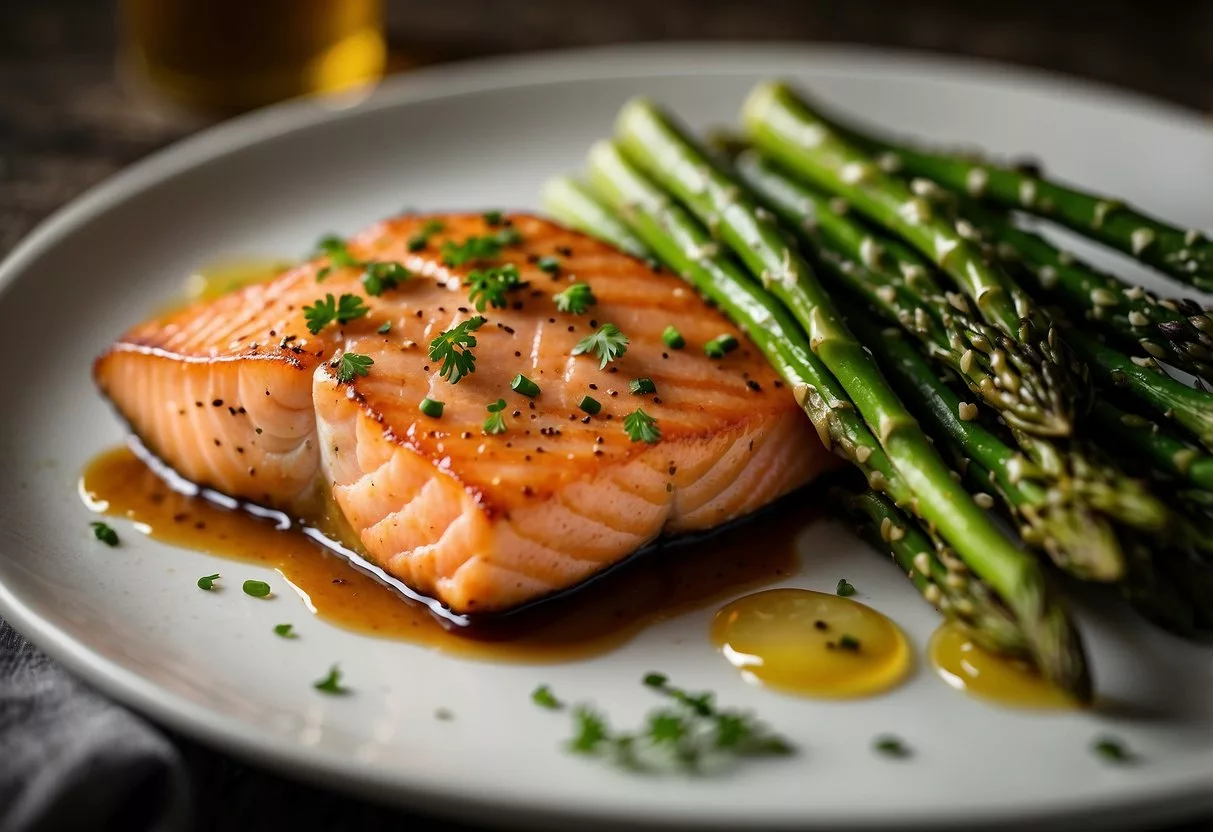
Grilled salmon with asparagus makes a healthy dinner choice for those with insulin resistance. Salmon is rich in omega-3 fatty acids, which are beneficial for heart health.
Asparagus is low in calories and provides fiber. This combination helps create a balanced meal that supports overall health.
To prepare, season the salmon with herbs and spices. A little lemon juice adds flavor without extra calories. Grill the salmon until it flakes easily with a fork.
For the asparagus, toss it in olive oil, salt, and pepper. Grill the asparagus until tender and slightly charred.
This dish can be served with a side of quinoa or brown rice for added fiber. It is filling and can help maintain stable blood sugar levels.
Eating grilled salmon with asparagus often can be part of a healthy lifestyle for those managing insulin resistance.
Quinoa Salad with Avocado
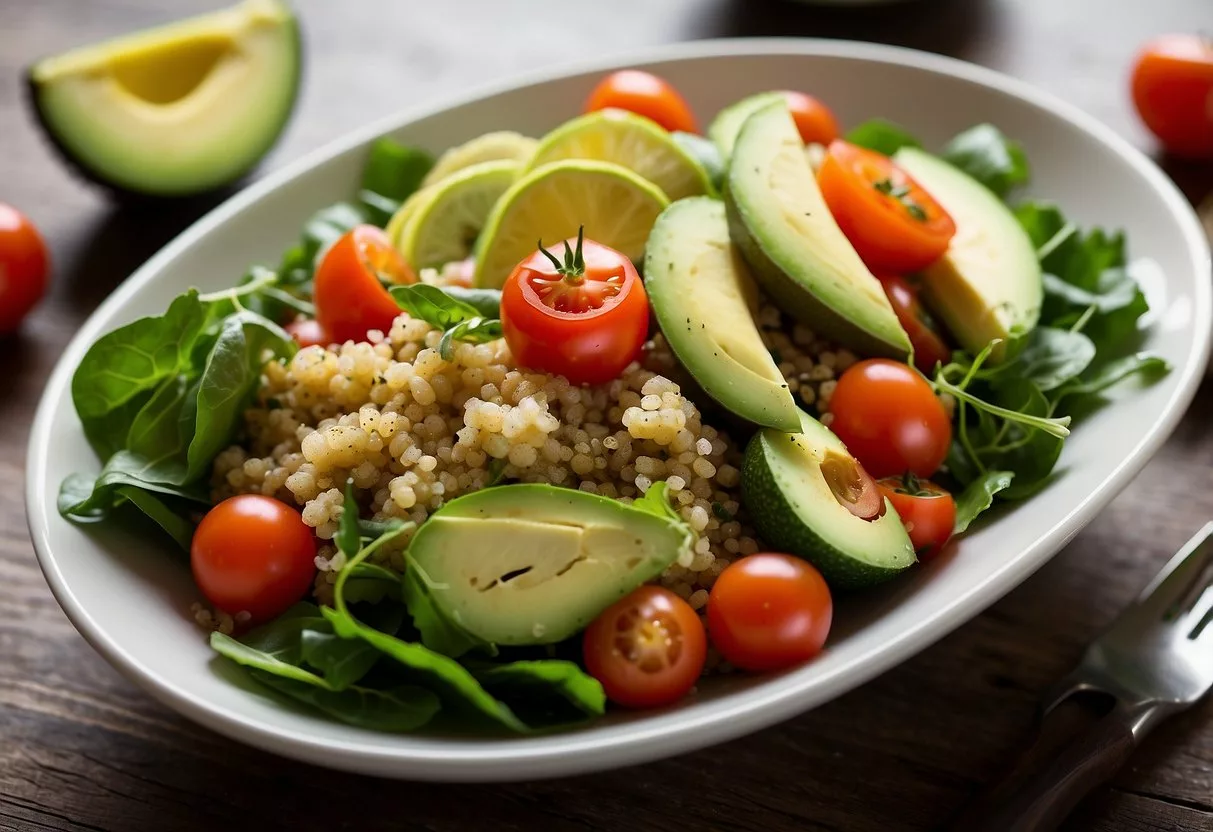
Quinoa salad with avocado is a nutritious dish perfect for those managing insulin resistance. Quinoa is a whole grain that is high in fiber and protein, which helps stabilize blood sugar levels.
To prepare this salad, cook the quinoa according to package instructions. Typically, this involves combining quinoa with water, bringing it to a boil, then simmering until tender. Once cooked, let it cool.
Add diced avocado, chopped vegetables like tomatoes and cucumbers, and a dressing made from olive oil and lime juice. This blend offers healthy fats and important vitamins.
For added flavor, ingredients like black beans or corn can enhance the salad. These additions contribute both protein and fiber, making the meal more filling.
This dish can be enjoyed right away or stored for meal prep. When storing, it is best to add avocado just before serving to keep it fresh. Quinoa salad with avocado is a simple, tasty option that supports a healthy diet for individuals with insulin resistance.
Stir-Fried Tofu and Vegetables

Stir-fried tofu and vegetables offer a tasty option for those managing insulin resistance. This dish is quick to prepare and filling. It combines lean protein from tofu with a variety of colorful vegetables.
To make this dish, use firm or extra-firm tofu. This type of tofu holds its shape well during cooking. First, press the tofu to remove excess moisture. Then, cut it into cubes.
Choose a mix of vegetables such as bell peppers, broccoli, and carrots. These vegetables are low in carbohydrates and high in fiber, helping to maintain stable blood sugar levels.
Heat a small amount of olive oil in a wok or skillet. Add the tofu and cook until golden brown. Then, add the vegetables and stir-fry until they are tender yet crisp. Season with low-sodium soy sauce and ginger for added flavor.
This dish can be served on its own or with a small portion of brown rice or quinoa. The healthy ingredients provide essential nutrients while keeping meals balanced for those with insulin resistance.
4. Baked Chicken with Brussels Sprouts
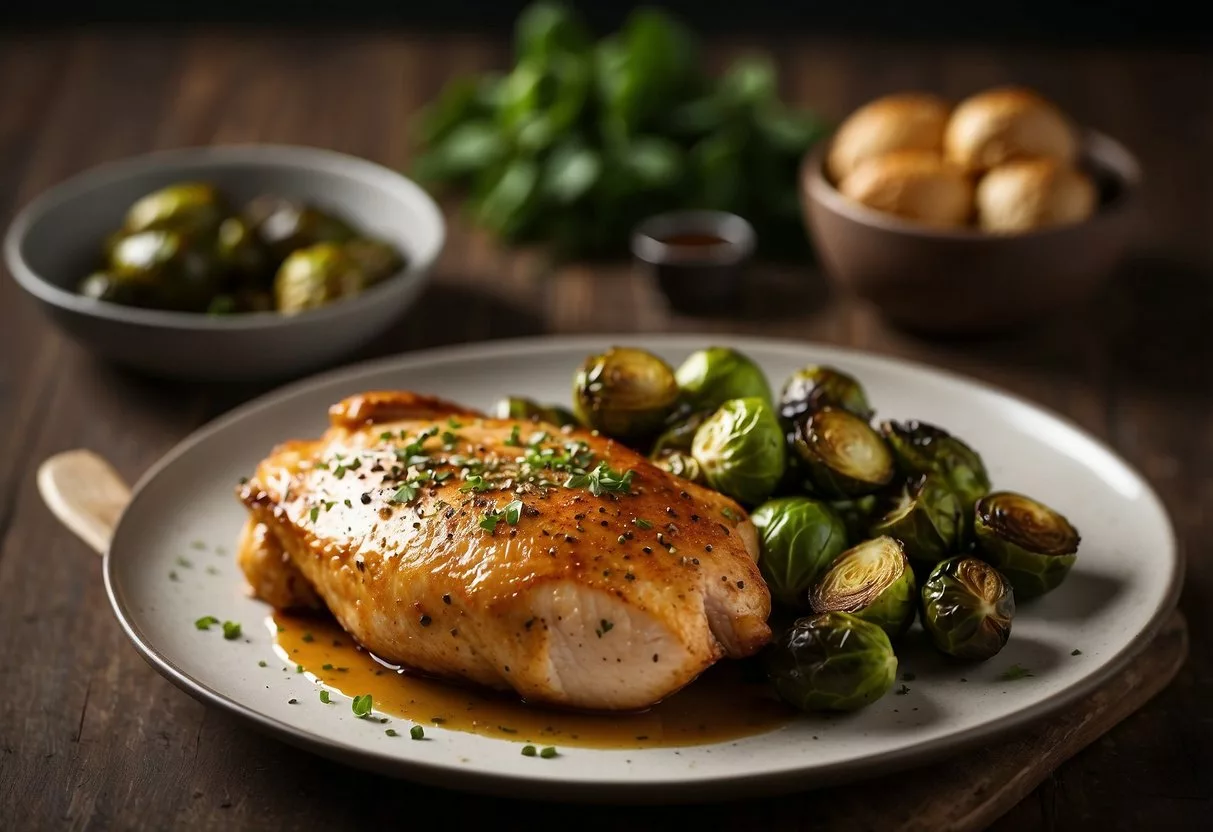
Baked chicken with Brussels sprouts is a simple and nutritious meal option for those with insulin resistance. This dish offers a good balance of protein and vegetables, making it satisfying and healthy.
The chicken is often seasoned with herbs and spices, then baked until golden and juicy. This method keeps the dish low in fat and adds flavor without extra calories.
Brussels sprouts provide essential nutrients, including fiber, vitamins, and minerals. They can be roasted alongside the chicken for a delicious and easy one-pan meal.
Using a sheet pan allows for even cooking and easy cleanup. A drizzle of olive oil and a sprinkle of seasoning can enhance the flavor while keeping the dish diabetes-friendly.
This recipe is versatile and can be adjusted to include other vegetables if desired. It serves well with a side of whole grains or a light salad for added fiber and nutrients.
Baked chicken with Brussels sprouts is not only quick to prepare, but it is also a wholesome choice for dinner any night of the week.
5. Zucchini Noodles with Pesto
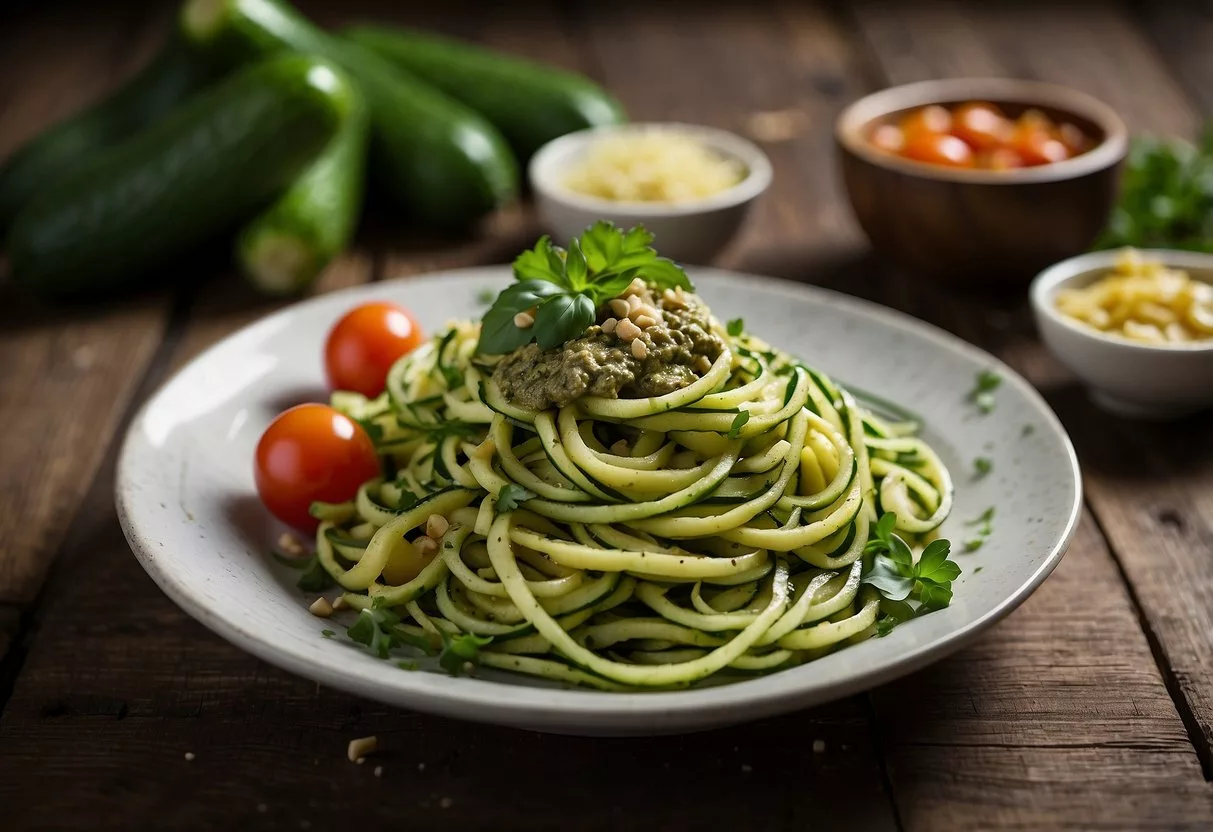
Zucchini noodles, also known as “zoodles,” are a great pasta alternative for those managing insulin resistance. They are low in carbohydrates and calories, which helps maintain stable blood sugar levels.
To prepare this dish, spiralize fresh zucchinis into noodle shapes. This process creates a light and healthy base that absorbs flavors well. Next, toss the zoodles with fresh pesto made from basil, garlic, pine nuts, and olive oil.
Cooking zucchini noodles is quick and easy. They only need about 2-3 minutes in a hot pan. This short cooking time helps them retain their firm texture while becoming tender.
Pesto adds a burst of flavor and healthy fats to the dish. It complements the mild taste of zucchini nicely. For added nutrition, consider mixing in cherry tomatoes or spinach.
This dish can be served as a stand-alone meal or paired with grilled chicken or shrimp. It provides balanced nutrition without causing spikes in blood sugar, making it a suitable option for people with insulin resistance.
Turkey Meatballs with Spaghetti Squash
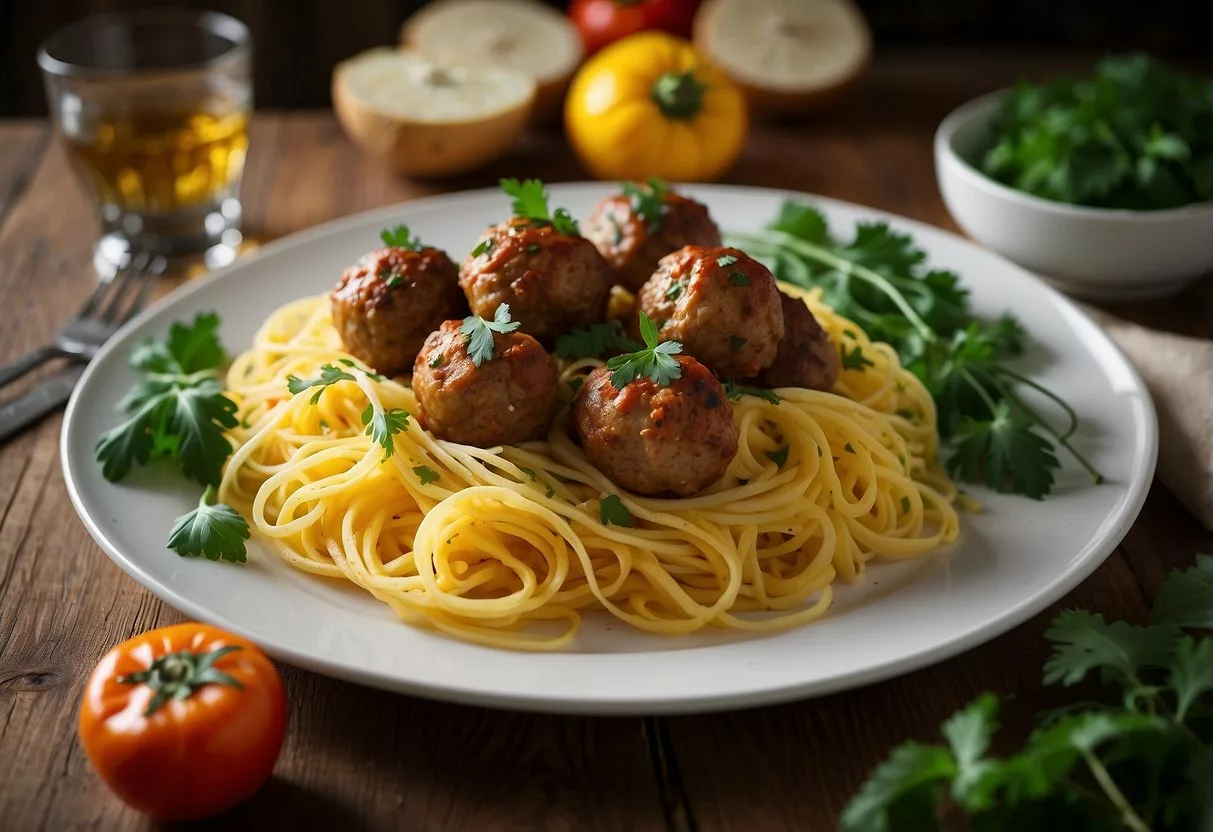
Turkey meatballs served with spaghetti squash is a healthy dinner option for those with insulin resistance. This dish is low in carbs and high in protein, making it a filling choice.
To prepare, cut a spaghetti squash in half and remove the seeds. Drizzle it with olive oil, then sprinkle with salt and pepper. Bake the squash at 400°F for around 40 minutes until tender.
While the squash cooks, ground turkey can be mixed with spices and formed into meatballs. These meatballs can be baked alongside the squash for about 20 minutes. This method keeps them juicy and flavorful.
Once cooked, the spaghetti squash can be scraped into strands that resemble noodles. Serve the meatballs over these strands for a satisfying meal. This dish is not only nutritious but also easy to make and customize with different herbs or sauces.
Using spaghetti squash instead of traditional pasta helps manage blood sugar levels. This dinner idea allows for enjoyment of a classic favorite while adhering to dietary needs. The flavors of turkey and spices combine well, making it a delicious option.
7. Cauliflower Rice Sushi Rolls

Cauliflower rice sushi rolls are a great option for those with insulin resistance. This dish replaces traditional sushi rice with cauliflower, making it lower in carbohydrates.
To prepare, cauliflower is processed until it resembles rice. It can be cooked by steaming or frying. For a tasty flavor, mix the cooked cauliflower with rice vinegar.
Once prepared, it is placed on a sheet of nori. Fill it with fresh vegetables and proteins, like tuna or avocado. The roll is then tightly wrapped using a sushi mat.
These rolls are not only delicious but also versatile. They can be filled with a variety of ingredients, catering to different tastes. Adding a dipping sauce made from soy sauce or other low-sugar options enhances the flavor.
Cauliflower rice sushi rolls can be enjoyed as a healthy dinner option. They provide essential nutrients while keeping carbohydrate intake in check. This makes them suitable for those managing insulin levels.
8. Lentil and Vegetable Stew
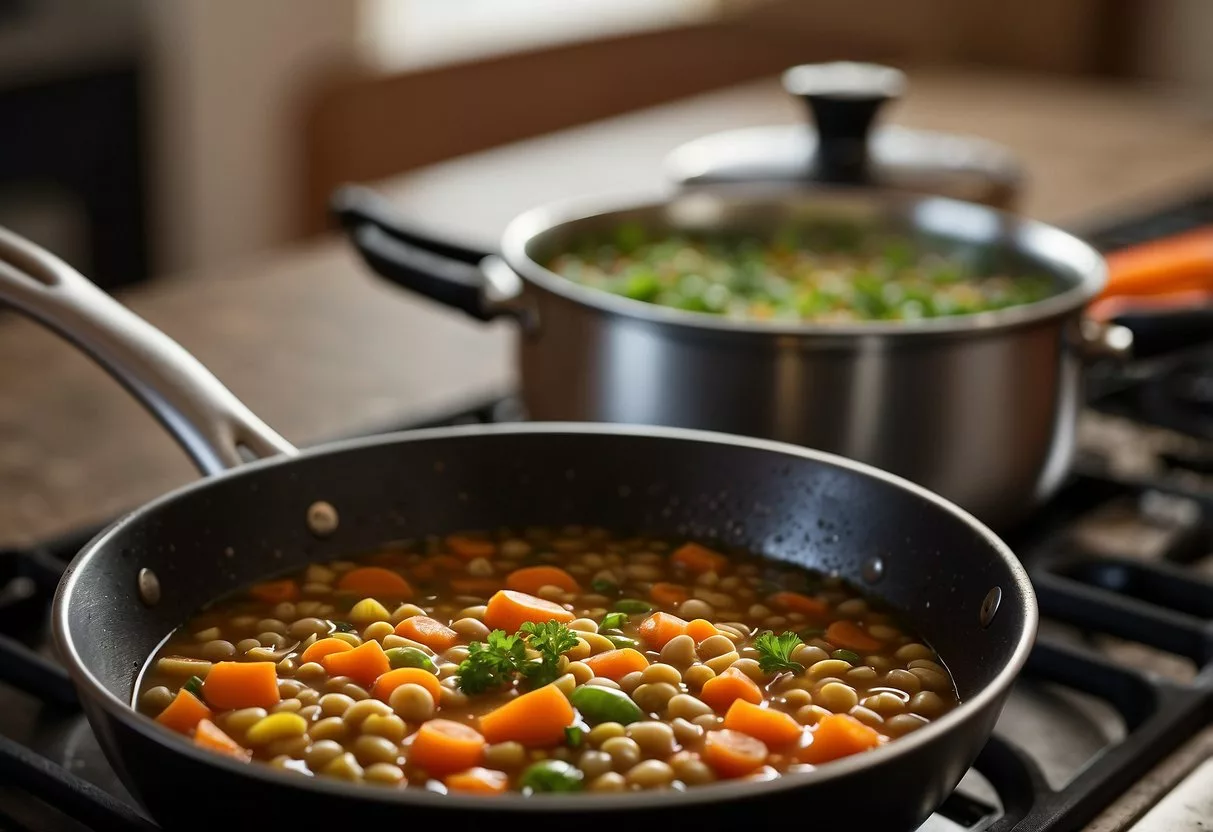
Lentil and vegetable stew is a nutritious option for those with insulin resistance. It includes lentils, which are high in fiber and protein. This helps stabilize blood sugar levels.
The stew typically features a mix of vegetables such as carrots, celery, and spinach. These ingredients provide essential vitamins and minerals. They also add flavor without extra calories or unhealthy fats.
Using herbs and spices, like garlic and thyme, can enhance the taste. They are packed with antioxidants, which may help reduce inflammation. The dish is hearty and filling, making it a great choice for dinner.
Cooking this stew is simple and quick. It can be made in one pot, saving time on cleanup. It also stores well, so leftovers can be enjoyed the next day.
Overall, lentil and vegetable stew is a wise choice. It combines wholesome ingredients that contribute to a balanced meal. This dish can be part of a healthy diet for managing insulin resistance.
9. Spinach and Feta Stuffed Peppers
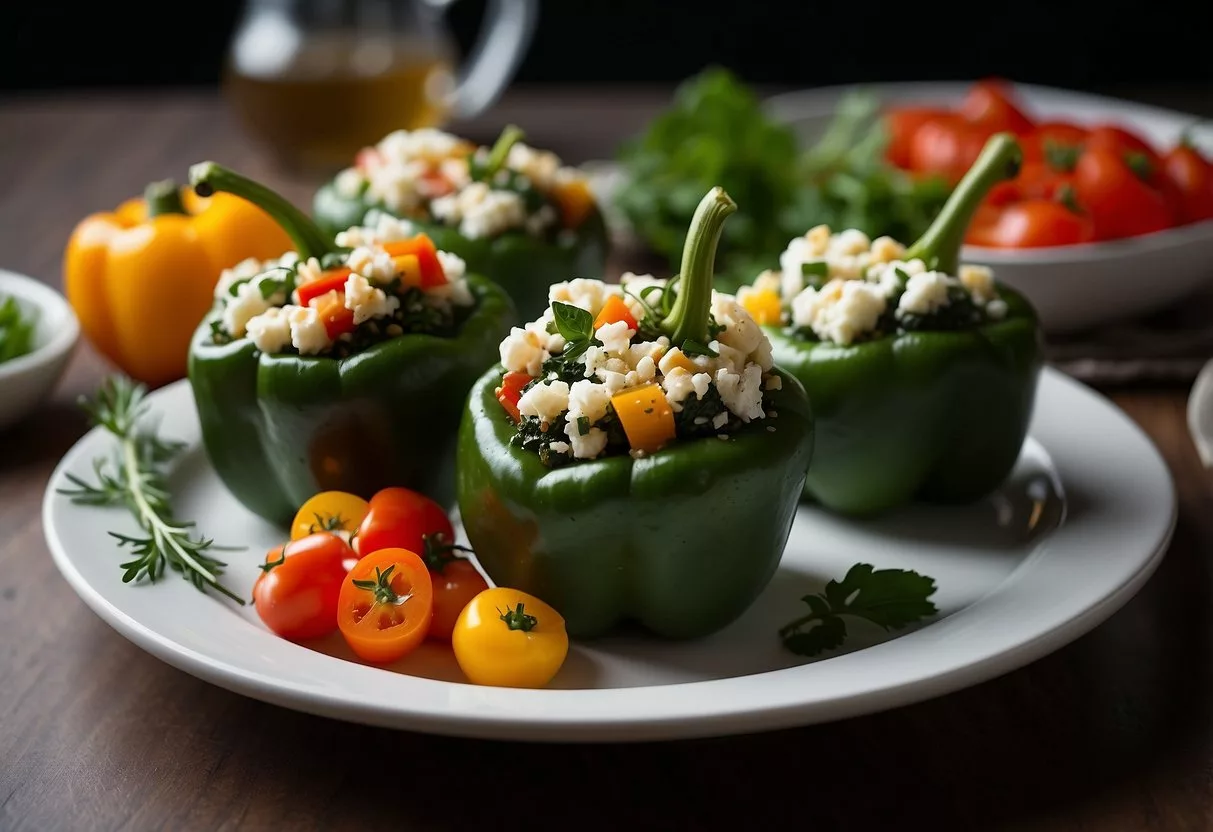
Spinach and feta stuffed peppers make a nutritious dinner option for those with insulin resistance. This dish combines the health benefits of spinach with the creamy taste of feta cheese.
To prepare, the tops of bell peppers are removed, and the seeds are discarded. The peppers are then steamed or roasted to soften them. This process enhances their flavor and makes them easier to eat.
Next, a filling is made by sautéing onions and fresh spinach in olive oil. Feta cheese is added to the spinach mixture for flavor. This combination is rich in vitamins and minerals, making it a healthy choice.
The stuffed peppers are baked until tender, allowing the flavors to meld. This dish is not only satisfying but also visually appealing. Each serving provides a balanced meal that is high in fiber and low in saturated fats.
Spinach and feta stuffed peppers are easy to prepare and can be made in advance. They can be served warm or at room temperature, making them versatile for any dining occasion.
10. Chia Seed Pudding with Berries
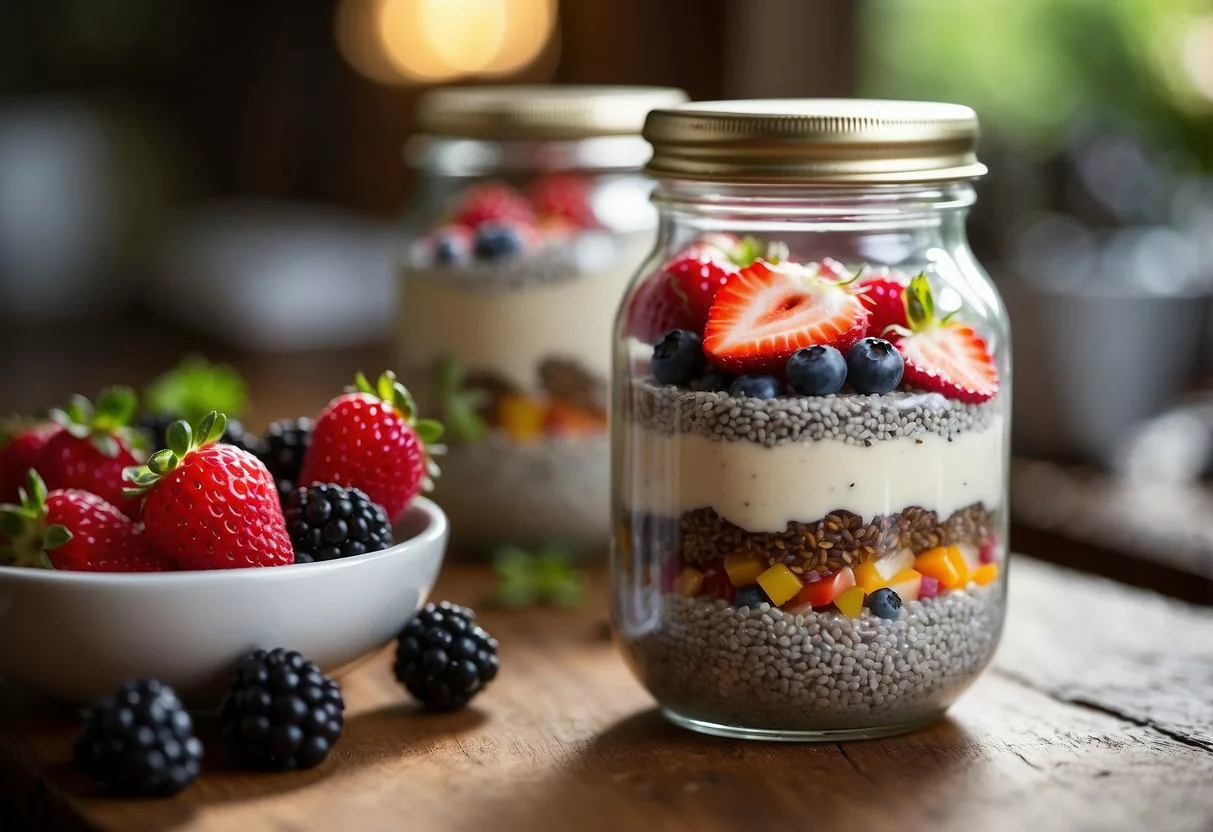
Chia seed pudding is a nutritious and easy dinner option for those managing insulin resistance. It is rich in fiber and can help stabilize blood sugar levels.
To make chia seed pudding, one starts by mixing chia seeds with milk or a milk alternative. This mixture thickens as the seeds absorb the liquid, creating a creamy texture.
Adding berries enhances the flavor and increases the antioxidant content. Berries like blueberries, strawberries, or raspberries are great choices. They add natural sweetness without spiking insulin levels.
Chia seed pudding is versatile and can be prepared in advance. It can be refrigerated and enjoyed later, making it a convenient option for busy evenings.
A serving of this pudding can be topped with nuts or a sprinkle of cinnamon for added taste and healthy fats. It provides a satisfying finish to any meal. This dish aligns well with a balanced diet for people looking to manage insulin resistance effectively.
Greek Salad with Grilled Shrimp
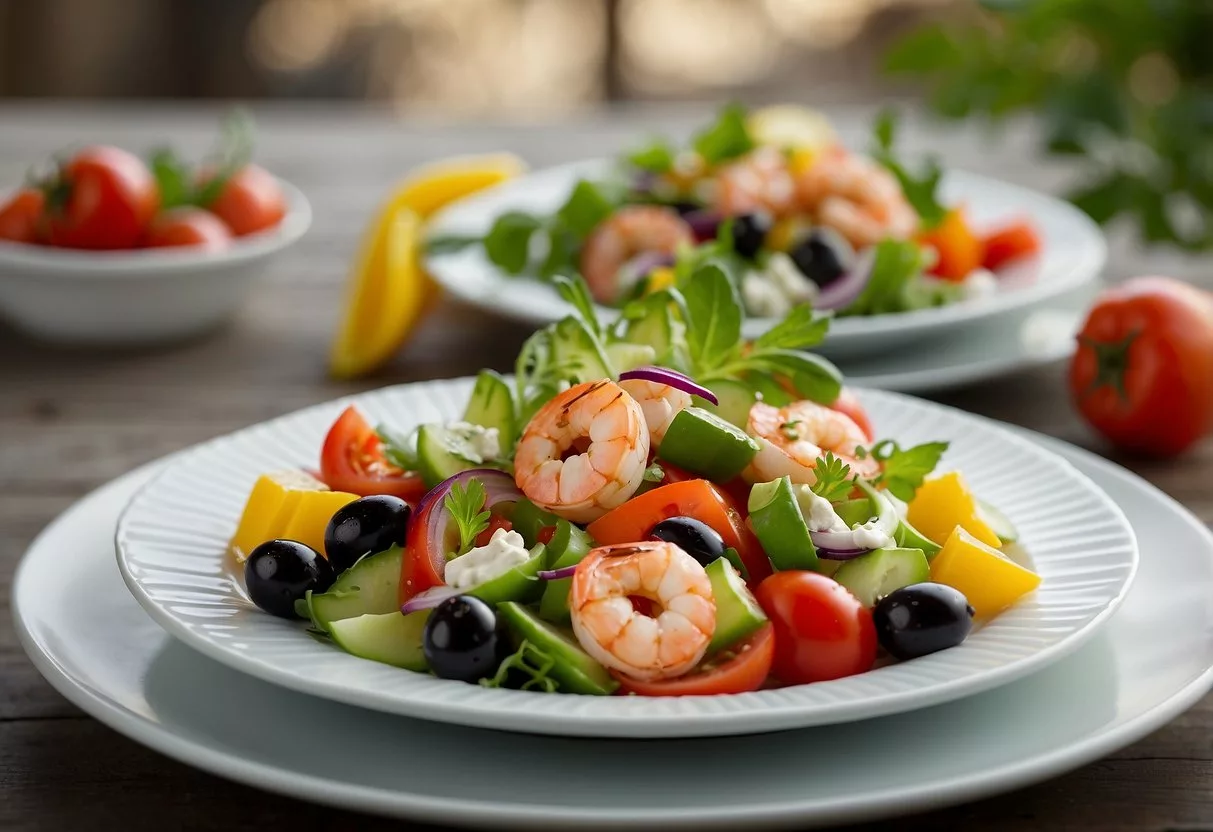
Greek salad with grilled shrimp is a fresh and nutritious option for those with insulin resistance. The salad typically includes ingredients like cucumbers, tomatoes, red onions, and bell peppers. These vegetables are low in carbohydrates and high in fiber, which helps control blood sugar levels.
Adding grilled shrimp provides lean protein. Shrimp is low in calories and a good source of omega-3 fatty acids. This is beneficial for heart health, which is important for people with insulin resistance.
For dressing, a mix of olive oil, lemon juice, salt, and oregano enhances the flavor without adding sugars. Olive oil offers healthy fats that support overall health.
This meal is quick to prepare and can be enjoyed at lunch or dinner. It’s versatile, allowing for adjustments based on personal preferences.
Including Greek salad with grilled shrimp in a meal plan can provide essential nutrients while helping to maintain stable blood sugar levels. It offers a delightful taste that can satisfy cravings without compromising health goals.
Broiled Trout with Lemon
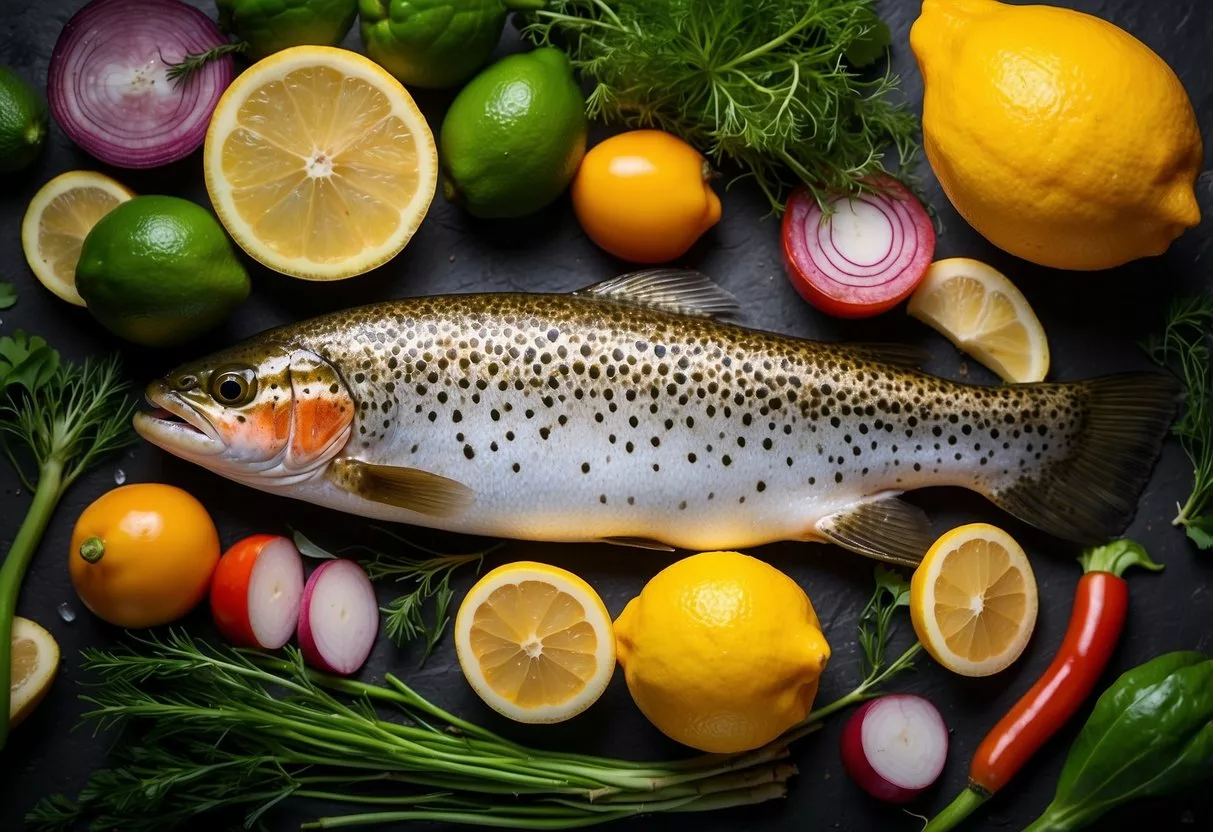
Broiled trout with lemon is a healthy and delicious option for those managing insulin resistance. This dish is rich in protein and omega-3 fatty acids, which can be beneficial for heart health.
To prepare, the trout is seasoned with fresh lemon juice, herbs, and a little salt. This brightens the flavor without adding extra calories. Broiling uses high heat, which cooks the fish quickly and helps maintain moisture.
Serving the trout with a side of steamed vegetables adds fiber and nutrients. Options like broccoli or asparagus complement the meal well. These vegetables help maintain stable blood sugar levels.
For those seeking easy preparation, broiling trout takes less than 15 minutes. This makes it a quick dinner choice for busy evenings. It is not only simple but also full of flavor, demonstrating that healthy meals can be enjoyable.
Incorporating dishes like broiled trout into the weekly menu can support healthy eating habits. By focusing on fresh ingredients, individuals can make satisfying meals that align with their health goals.
13. Stuffed Portobello Mushrooms
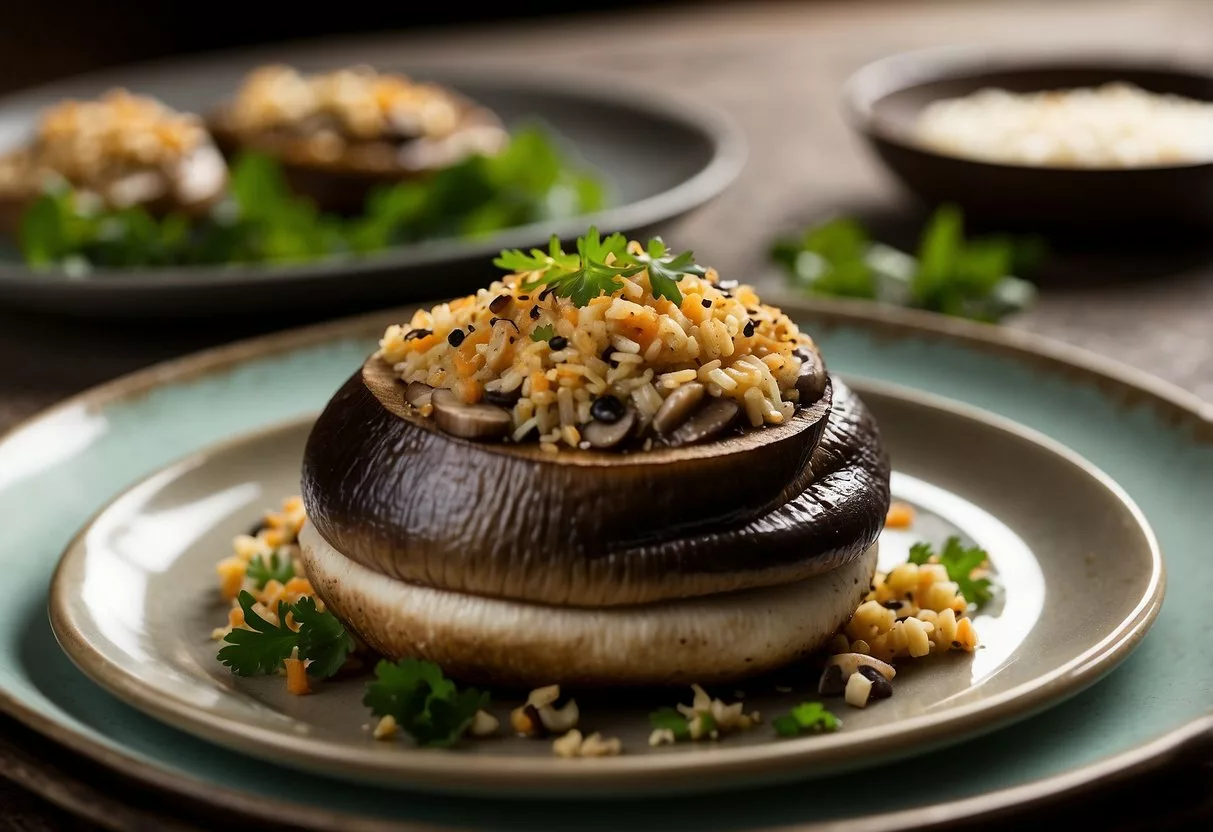
Stuffed Portobello mushrooms are a flavorful and healthy dinner option for those with insulin resistance. These large mushrooms serve as a great base for a variety of fillings.
To prepare, clean the mushrooms and remove the stems. The stems can be chopped and added to the filling for extra taste. A mixture of veggies, herbs, and cheeses can be used to stuff the mushrooms.
For added nutrition, consider using spinach, tomatoes, and zucchini in the filling. Topping with mozzarella and Parmesan cheese enhances the flavor. Dried herbs like oregano can also add depth.
Baking these mushrooms at 400 degrees Fahrenheit for about 20 minutes allows the cheese to melt and the mushrooms to become tender. This dish is low in carbohydrates and rich in fiber, making it suitable for managing blood sugar levels.
Stuffed Portobello mushrooms are versatile and can be served with a side salad or on a bed of leafy greens for added freshness. They are not only filling but also provide essential nutrients to support overall health.
14. Chicken and Spinach Soup

Chicken and spinach soup is a nutritious option for those with insulin resistance. It combines lean protein from chicken with the vitamins and minerals found in spinach. This soup is low in calories and high in nutrients.
To make this dish, she can start by sautéing onions and garlic in a pot. Adding diced chicken breast will provide a healthy protein source. Cooking it until browned enhances the flavor.
Next, she can add chicken broth and bring the mixture to a simmer. Fresh or frozen spinach can be included for added nutrients. Spinach is particularly rich in iron and vitamins A and C.
Seasoning can be kept simple with salt, pepper, and maybe a squeeze of lemon. This brightness complements the savory flavors of the soup.
This dish can be served hot and is perfect for a quick dinner. It can also be stored in the refrigerator for a few days, making it convenient for meal prep. With its easy preparation and healthy ingredients, chicken and spinach soup is an excellent choice.
15. Eggplant Parmesan
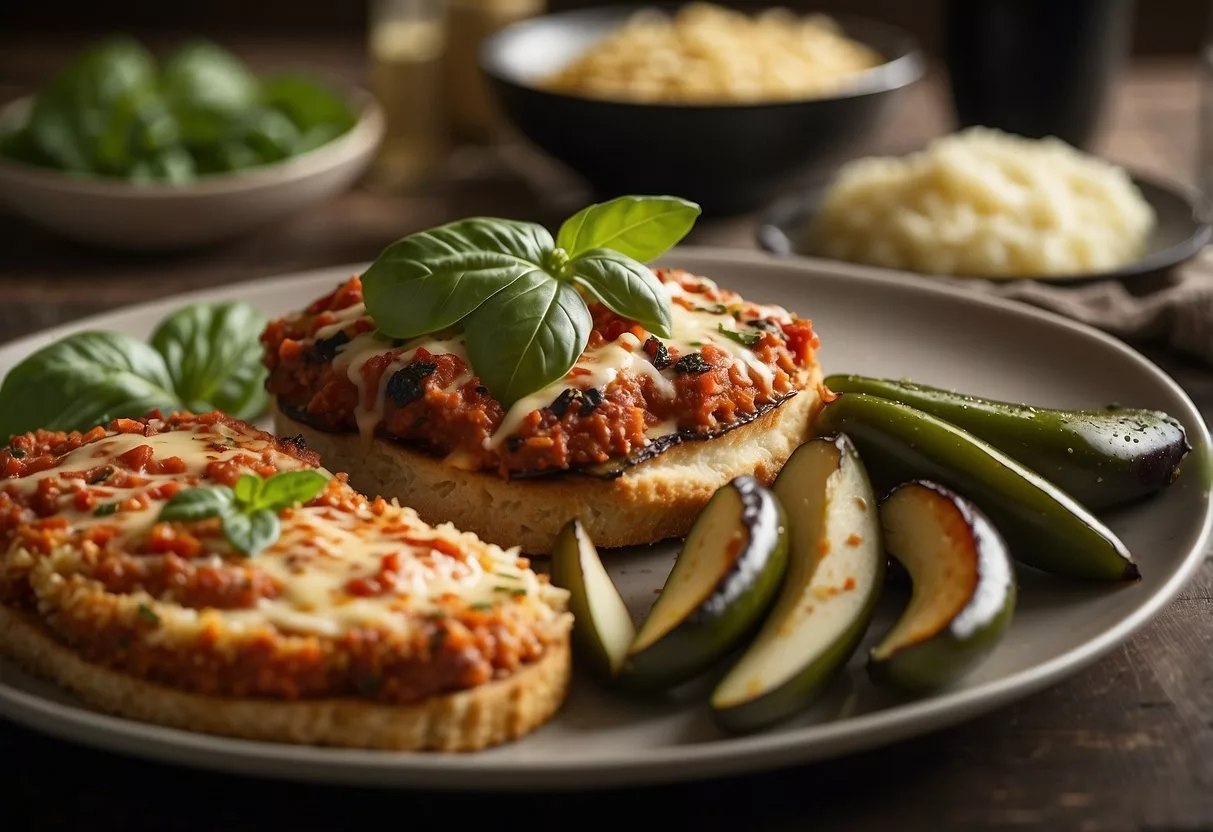
Eggplant Parmesan is a delicious dish that works well for people with insulin resistance. This recipe features slices of eggplant that are breaded and baked instead of fried. This reduces added fats and calories.
The eggplant is rich in fiber, which can help with blood sugar control. It also contains important nutrients like vitamins A and C. The dish typically includes marinara sauce, which adds flavor and antioxidants.
Using low-fat cheese can help keep the dish lighter. Baking rather than frying makes it a healthier option. Adding fresh herbs like basil can enhance the taste and nutrition.
Eggplant Parmesan can be served with a side salad to increase vegetable intake. This combo helps create a filling meal that supports blood sugar management. By focusing on whole ingredients, it remains a satisfying choice for dinner.
This dish is both easy to prepare and enjoyable for many palates. It proves that healthy eating can also be tasty.
Nutritional Considerations for Insulin Resistance
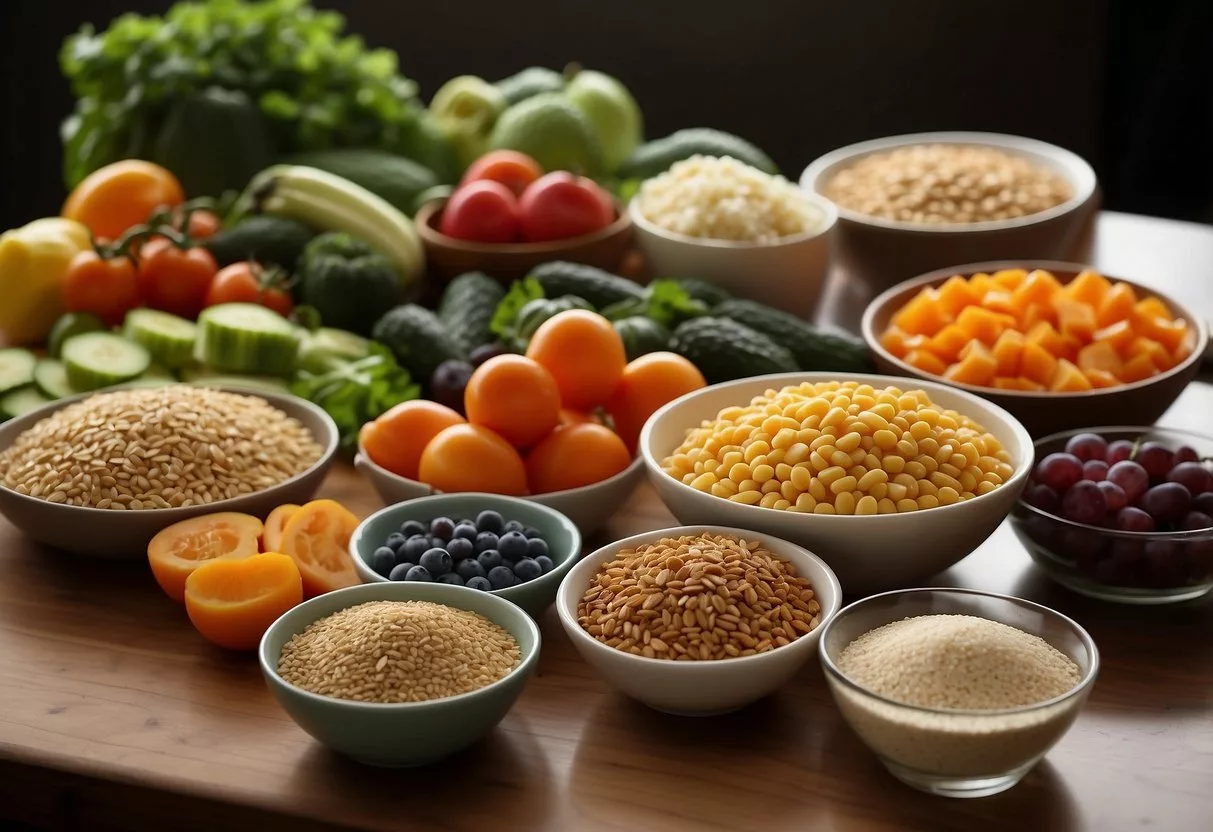
Managing insulin resistance involves paying attention to specific dietary factors. Focus on macronutrient balance and the glycemic index of foods. These elements can support blood sugar control and overall health.
Role of Macronutrients
Macronutrients consist of carbohydrates, proteins, and fats. Each plays a unique role in managing insulin resistance.
- Carbohydrates: It’s essential to choose complex carbs like whole grains and legumes. These foods are high in fiber, which helps regulate blood sugar levels.
- Proteins: Lean proteins, such as chicken, fish, and plant-based sources, help maintain muscle mass. They also aid in satiety, making it easier to manage portion sizes.
- Fats: Healthy fats, like those from avocados and nuts, offer heart health benefits. They can also improve satiety, which reduces the temptation to snack on high-carb options.
A balanced intake of macronutrients can help stabilize insulin levels and support overall metabolic health.
Glycemic Index and Its Importance
The glycemic index (GI) measures how quickly foods raise blood sugar levels. For individuals with insulin resistance, foods with a low GI are preferable.
- Low GI Foods: Foods like oats, legumes, and most vegetables are low on the GI scale. These foods cause slower increases in blood sugar levels.
- High GI Foods: Foods such as white bread and sugary snacks have a high GI. They can lead to rapid spikes in blood sugar, which is harmful for those managing insulin resistance.
Choosing foods with a low GI can improve insulin sensitivity. This simple adjustment in diet can significantly benefit individuals striving to manage their condition.
Healthy Eating Habits
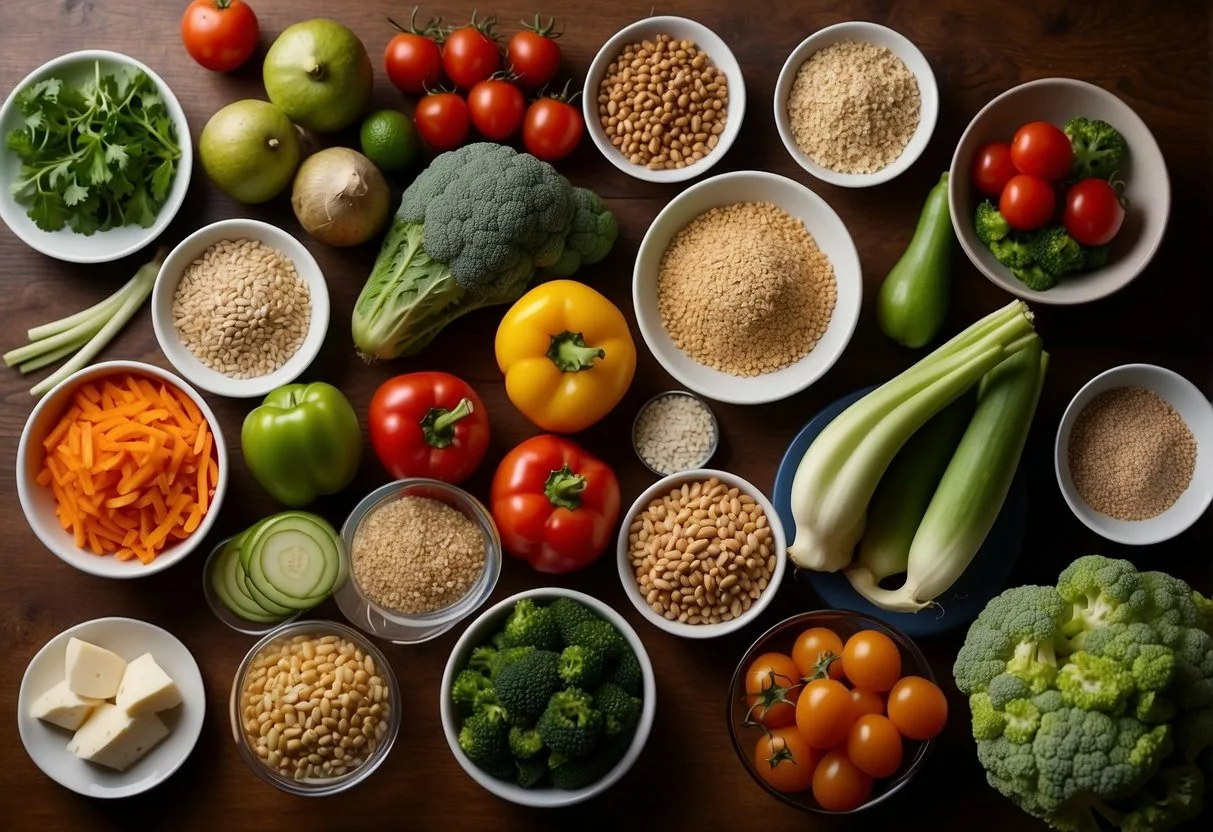
Developing healthy eating habits is crucial for managing insulin resistance. It helps maintain stable blood sugar levels and supports overall health. Meal planning and portion control play significant roles in achieving this goal.
Meal Planning Tips
Meal planning is an effective way to create balanced meals. It allows individuals to prepare a variety of nutritious foods, ensuring they have healthy options available.
- Create a Weekly Menu: Set aside time each week to plan meals. This reduces impulsive eating choices.
- Include Whole Foods: Focus on fresh fruits, vegetables, whole grains, and lean proteins. These foods aid in maintaining energy levels and managing blood sugar.
- Batch Cooking: Prepare meals in advance to save time. Cooking larger portions can help maintain portion control and reduce the temptation to snack on unhealthy items.
- Snack Smart: Plan for healthy snacks, like nuts or yogurt. This can prevent unhealthy snacking between meals.
Portion Control
Portion control is essential for managing calorie intake and blood sugar levels. It involves understanding serving sizes and listening to the body’s hunger signals.
- Use Smaller Plates: This helps create the illusion of a fuller plate, which can reduce the tendency to overeat.
- Measure Portions: Use measuring cups or a food scale to ensure recommended serving sizes. This can be particularly useful when learning what appropriate portions look like.
- Eat Slowly: Taking time to chew and savor food can improve digestion and help recognize fullness cues.
- Avoid Eating from Containers: This leads to mindless eating. Instead, serve food on plates to monitor portion sizes better.
Frequently Asked Questions
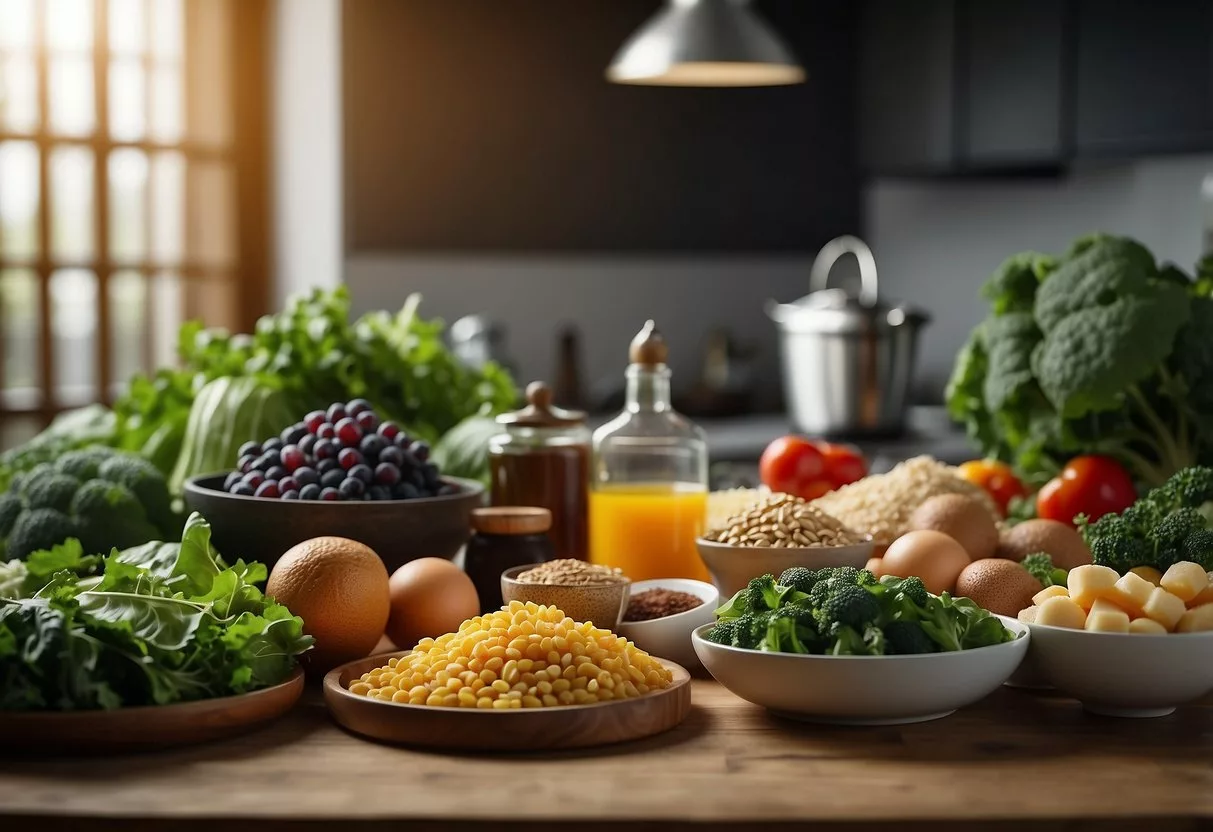
This section addresses common questions related to meal planning and recipe ideas for individuals managing insulin resistance. The focus will be on low-carbohydrate options, suitable meal plans, vegetarian choices, and specific dietary needs.
What are some insulin resistance-friendly dinner recipes for a low carbohydrate diet?
For a low carbohydrate diet, options like Grilled Salmon with Asparagus and Zucchini Noodles with Pesto can be great choices. These meals provide protein and healthy fats while keeping carbs low, making them suitable for blood sugar management.
Can you provide a meal plan suitable for individuals with insulin resistance?
A meal plan for those with insulin resistance could include meals like Baked Chicken with Brussels Sprouts and Quinoa Salad with Avocado. These dishes balance proteins, healthy fats, and fiber-rich ingredients, helping to maintain stable blood sugar levels throughout the day.
Are there specific dinner recipes that cater to those following a PCOS diet?
Individuals with PCOS often benefit from meals rich in fiber and low in sugar. Stir-Fried Tofu and Vegetables is an excellent option as it is high in plant-based protein and packed with colorful veggies, promoting overall health.
What vegetarian dinner options are recommended for managing insulin resistance?
Vegetarian options like Quinoa Salad with Avocado and Stir-Fried Tofu and Vegetables are effective for managing insulin resistance. These meals are rich in nutrients and provide a balanced mix of protein, fiber, and healthy fats.
Where can I find a cookbook dedicated to insulin resistance-friendly recipes?
Cookbooks focusing on insulin resistance often feature recipes that prioritize low carbohydrates and whole foods. Searching online or visiting bookstores can yield several options tailored to this dietary need.
What are some Indian dinner recipes that are suitable for people with insulin resistance?
Indian cuisine offers great choices, such as lentil-based dishes or vegetable curries made with little oil. Recipes that incorporate beans and spices can provide essential nutrients while maintaining low sugar levels, making them suitable for individuals with insulin resistance.